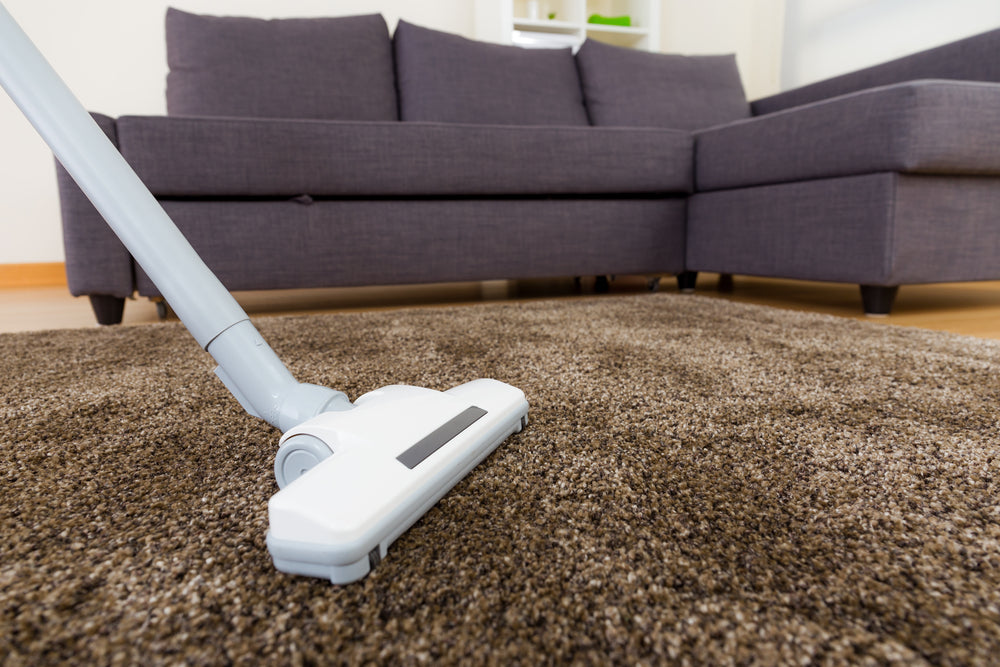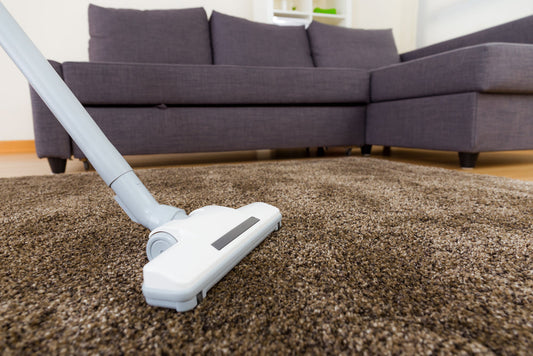
Wool Carpet Care Guide: Cleaning Tips & Complete Stain Removal Chart
Share
Wool Carpet Care Guide: Cleaning Tips & Complete Stain Removal Chart
Creator: Wools of New Zealand (Wools of NZ) |
Wool carpets and tufted wool rugs are naturally beautiful, luxuriously soft, and built to last. This guide covers everything you need to keep them looking their best—from smart vacuuming habits and fast spill action to a complete, easy-to-use stain removal chart.
Shedding: What’s Normal
All wool carpets shed, especially high pile weight, staple, or spun yarn styles. Shedding is simply the release of short, excess fibers due to friction and foot traffic—it does not affect the structural integrity of your carpet. Expect the effect to lessen and typically stop within 3–4 months, depending on traffic and vacuum frequency.
During the shedding period, occasional use of an adjustable revolving power/turbo vacuum head can help your carpet look its best—just make sure the brush does not touch the pile.
How to Vacuum Wool Carpets
- Weekly clean: Do a complete vacuum once per week to remove dust and prevent soil from embedding.
- High-traffic areas: Vacuum more often, especially during the initial shedding period.
- Use suction only: For regular care on both cut pile and loop pile, use a static foot suction vacuum.
- Go slow: Give the vacuum time to work thoroughly.
Spills & Spot Cleaning (Step-by-Step)
Speed is everything. Wool naturally resists many spills, but quick action gives the best results.
Liquid Spills
- Blot (don’t rub) with an absorbent white cloth until dry.
- If available, use an extraction spot cleaner. Work from the outside in.
- After treatment, blot as dry as possible, then cover with paper towels to avoid watermarks.
Solids
- Use a spoon to gently lift away as much as possible.
- Treat any residue using the instructions in the stain removal chart below.
DIY Detergent Solution (Wool-Safe)
Listed as Treatment B in the chart.
- 1 teaspoon clear dishwashing liquid (no bleach or strong alkali) or detergent powder
- 1 teaspoon white vinegar
- 1 litre lukewarm water
Apply to the stain, then rinse thoroughly with fresh water to remove all detergent. Blot dry.
What Not to Do
- Avoid stain repellents containing silicone or bleach; they can accelerate soiling and void warranties.
- Always pre-test any cleaner in an inconspicuous area to confirm colourfastness.
- Ensure good ventilation when using solvent-based cleaners.
Wool Carpet Stain Removal Chart (A–J)
Tip: Print or bookmark this section for quick reference. Print chart
| Offending Substance | Step 1 | Step 2 | Step 3 |
|---|---|---|---|
| Alcoholic Drinks | A | B | – |
| Beetroot | A | B | – |
| Bleach | A | B | – |
| Blood | C | B | – |
| Butter | D | D | – |
| Chewing Gum | D | C | – |
| Chocolate | B | C | – |
| Coffee | A | B | C |
| Cooking Oil | C | B | – |
| Cream | B | C | – |
| Egg | B | – | – |
| Faecal matter | B | J | – |
| Floor Wax | C | B | – |
| Fruit Juice | A | B | – |
| Furniture Polish | C | B | – |
| Gravy / Sauce | E | B | C |
| Ink — Ballpoint | C | G | B |
| Ink — Fountain Pen | A | B | C |
| Ink — Felt Tip | E | B | F |
| Lipstick | C | B | – |
| Milk | E | C | B |
| Mustard | B | – | – |
| Nail Polish | F | C | A |
| Oil | C | B | – |
| Paint — Latex | A | B | C |
| Paint — Oil based | I | C | B |
| Rust | C | B | H |
| Salad Dressing | B | C | – |
| Shoe Polish | C | B | – |
| Soft Drink | A | B | – |
| Urine* | A | B | J |
| Vomit | B | – | – |
| Wine | I | A | B |
| Tea | A | B | C |
| Tar | C | – | – |
Key to Treatments
- A: Blot with cold water
- B: Apply detergent solution (see above)
- C: Mineral spirits or turpentine
- D: Chill with ice/freezing spray, then pick/scrape off
- E: Blot with warm water
- F: Clear nail polish remover (preferably acetone)
- G: Isopropyl alcohol
- H: Rust remover
- I: Absorbent powder (e.g., salt or talcum)
- J: Dry compound cleaner
*For pet accidents and similar organic spills, act immediately for best results.
FAQ
Do wool carpets always shed?
Some initial shedding is normal and usually subsides within 3–4 months with routine vacuuming.
How often should I vacuum a wool carpet?
Vacuum thoroughly once per week, and more often in high-traffic areas or during the shedding period.
Is bleach safe for wool carpet?
No. Avoid products containing bleach or silicone—they can cause accelerated soiling and may void warranties.
What’s the best first step for any spill?
Blot immediately with a white absorbent cloth—never rub—and then follow the chart above.






